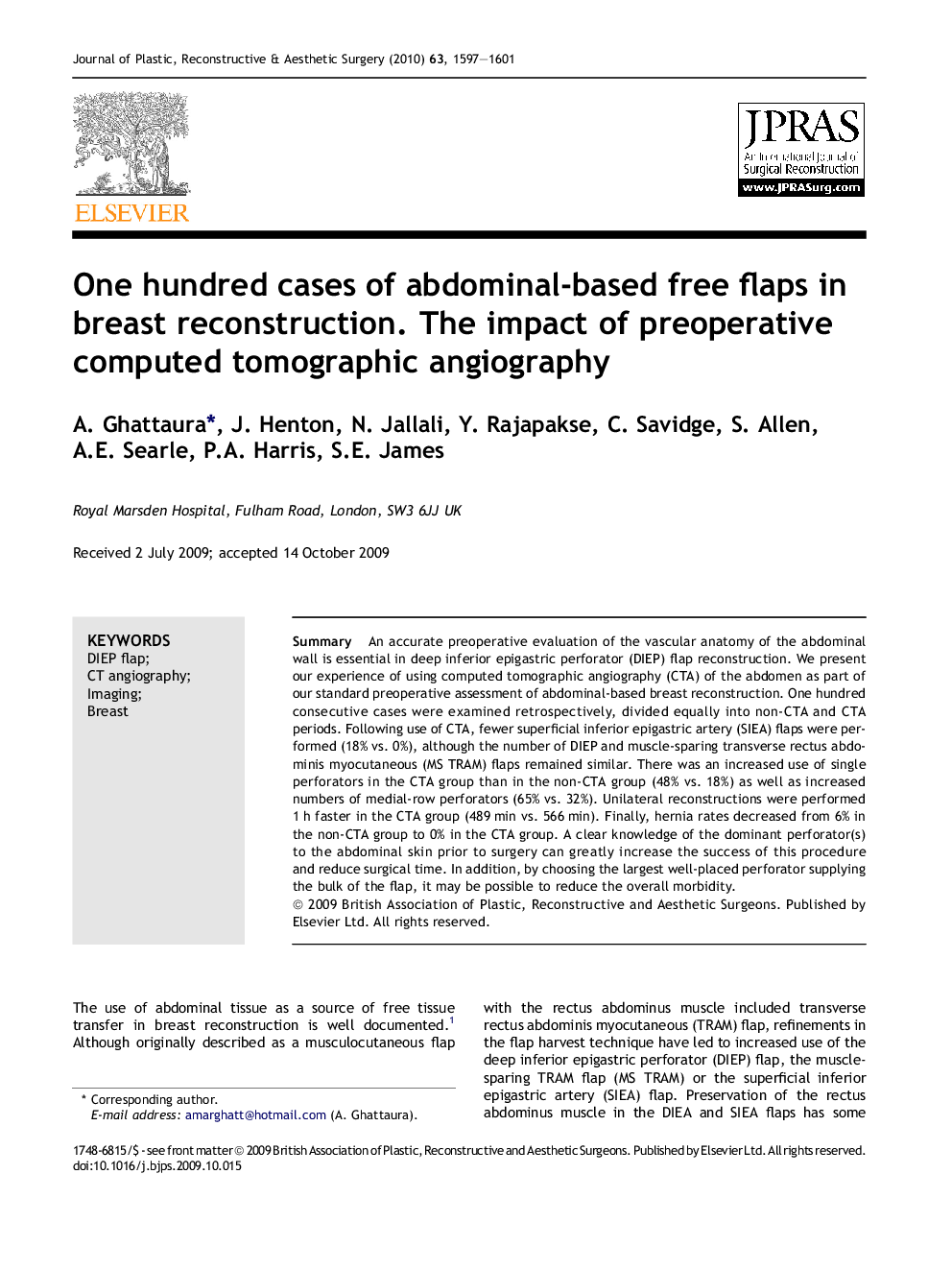| Article ID | Journal | Published Year | Pages | File Type |
|---|---|---|---|---|
| 4119713 | Journal of Plastic, Reconstructive & Aesthetic Surgery | 2010 | 5 Pages |
SummaryAn accurate preoperative evaluation of the vascular anatomy of the abdominal wall is essential in deep inferior epigastric perforator (DIEP) flap reconstruction. We present our experience of using computed tomographic angiography (CTA) of the abdomen as part of our standard preoperative assessment of abdominal-based breast reconstruction. One hundred consecutive cases were examined retrospectively, divided equally into non-CTA and CTA periods. Following use of CTA, fewer superficial inferior epigastric artery (SIEA) flaps were performed (18% vs. 0%), although the number of DIEP and muscle-sparing transverse rectus abdominis myocutaneous (MS TRAM) flaps remained similar. There was an increased use of single perforators in the CTA group than in the non-CTA group (48% vs. 18%) as well as increased numbers of medial-row perforators (65% vs. 32%). Unilateral reconstructions were performed 1 h faster in the CTA group (489 min vs. 566 min). Finally, hernia rates decreased from 6% in the non-CTA group to 0% in the CTA group. A clear knowledge of the dominant perforator(s) to the abdominal skin prior to surgery can greatly increase the success of this procedure and reduce surgical time. In addition, by choosing the largest well-placed perforator supplying the bulk of the flap, it may be possible to reduce the overall morbidity.
